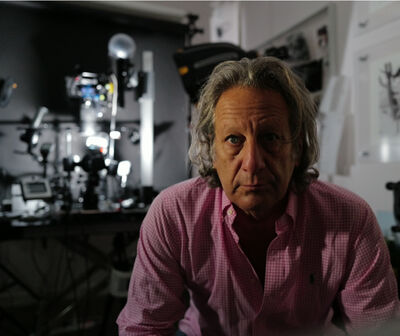Can I use ND filters for the eclipse?
Feb 23, 2024 21:53:45 #
I saw on the link for the film everyone likes that it appears to be nd5. Would a regular nd filter 5 or above work? I read the website for the film. It states it's nd5. So am I correct to think I can use my nd filters?
Feb 23, 2024 22:24:57 #
Orphoto
Loc: Oregon
The time period in question is before & after totality.
Fast answer is that NDs are risky and not recommended. If you do go that route you want about 15 stops of density. 5 is nowhere near enough.
Fast answer is that NDs are risky and not recommended. If you do go that route you want about 15 stops of density. 5 is nowhere near enough.
Feb 23, 2024 23:04:40 #
Drbobcameraguy wrote:
I saw on the link for the film everyone likes that it appears to be nd5. Would a regular nd filter 5 or above work? I read the website for the film. It states it's nd5. So am I correct to think I can use my nd filters?
Not safely. There are special filters for photographing eclipses.
Feb 23, 2024 23:10:33 #
I don't understand why the website for the special film states it is nd5. It is the film that everyone recommended.
Feb 23, 2024 23:13:07 #
Drbobcameraguy wrote:
I saw on the link for the film everyone likes that it appears to be nd5. Would a regular nd filter 5 or above work? I read the website for the film. It states it's nd5. So am I correct to think I can use my nd filters?
This might help
https://www.uglyhedgehog.com/user-page?upnum=2694
Feb 24, 2024 00:08:02 #
Feb 24, 2024 08:35:24 #
Does stacking ND filters work to get to 15? I would think so, but am asking for confirmation of my theory.
Thanks
RL
Thanks
RL
Feb 24, 2024 09:02:42 #
Drbobcameraguy wrote:
I saw on the link for the film everyone likes that it appears to be nd5. Would a regular nd filter 5 or above work? I read the website for the film. It states it's nd5. So am I correct to think I can use my nd filters?
I use ND16 when shooting the sun.
Feb 24, 2024 09:12:32 #
Drbobcameraguy wrote:
I saw on the link for the film everyone likes that it appears to be nd5. Would a regular nd filter 5 or above work? I read the website for the film. It states it's nd5. So am I correct to think I can use my nd filters?
It's a subtle difference in terminology. In photography, ND numbers are fractions of light. So ND2 is 1/2 the light (one stop), ND4 is 1/4 the light (two stops), ND8 is 1/8 the light (three stops), and so on.
In astrophotography, ND numbers represent the number of zeroes in the reduction. There is always a space between ND and the number. So, ND 5 represents a reduction of 1/100,000. The number of stops is the base 2 logarithm, or 16.6 stops. The easier way to remember is that each power of 10 represents about 3.3 stops (log2 of 10), and 5*3.3 = 16.5.
Do not use a regular ND filter. You can get ND100000 (5 zeroes) or ND1000000 (6 zeros) filters, from K&F Concepts, for example. Or you can get solar film.
Feb 24, 2024 09:23:18 #
jcboy3 wrote:
It's a subtle difference in terminology. In photo... (show quote)
You could stack ND1000 filters, which are the darkest commonly used ND filters in general photography. These are 10 stop filters. You would need seven of them to match an ND100000 (or ND 5) filter.
Feb 24, 2024 09:28:21 #
jcboy3 wrote:
It's a subtle difference in terminology. In photo... (show quote)
Thank you. That’s what I wanted to know.
Feb 24, 2024 09:28:59 #
jcboy3 wrote:
It's a subtle difference in terminology. In photo... (show quote)
Thank you for a great reply. It was exactly what I was needing to know and understand so that I don't damage my eyes or camera. Thanks again for a great reply!!!!!!!
Feb 24, 2024 11:34:48 #
Drbobcameraguy wrote:
I saw on the link for the film everyone likes that it appears to be nd5. Would a regular nd filter 5 or above work? I read the website for the film. It states it's nd5. So am I correct to think I can use my nd filters?
NO
Feb 24, 2024 12:46:06 #
Drbobcameraguy wrote:
I saw on the link for the film everyone likes that it appears to be nd5. Would a regular nd filter 5 or above work? I read the website for the film. It states it's nd5. So am I correct to think I can use my nd filters?
Be Very careful here, ND filters are most correctly measured by their log value
Where nd 0.3= 1 stop , nd0.6= 2 stops ,0.9=3 stops etc Nd 3.0 = 10 stops
However it has also become common to quote values directly in f/ stops.
And there the usual minimum value for solar photography is about 16 stops.
As an eclipse progresses the moon blocks the sun to varying degrees, but even a sliver of the sun is enough to do damage to eyes and cameras.
Do yourself a favor and read both NASA’s and B&H’s explanations of exactly what you need.
For safe photography.
Then buy the correct filter .
Take it seriously, because it is not like other photographic experiments where we try stuff to see what we get.
Good luck, be safe.
Feb 24, 2024 13:03:19 #
If you want to reply, then register here. Registration is free and your account is created instantly, so you can post right away.





